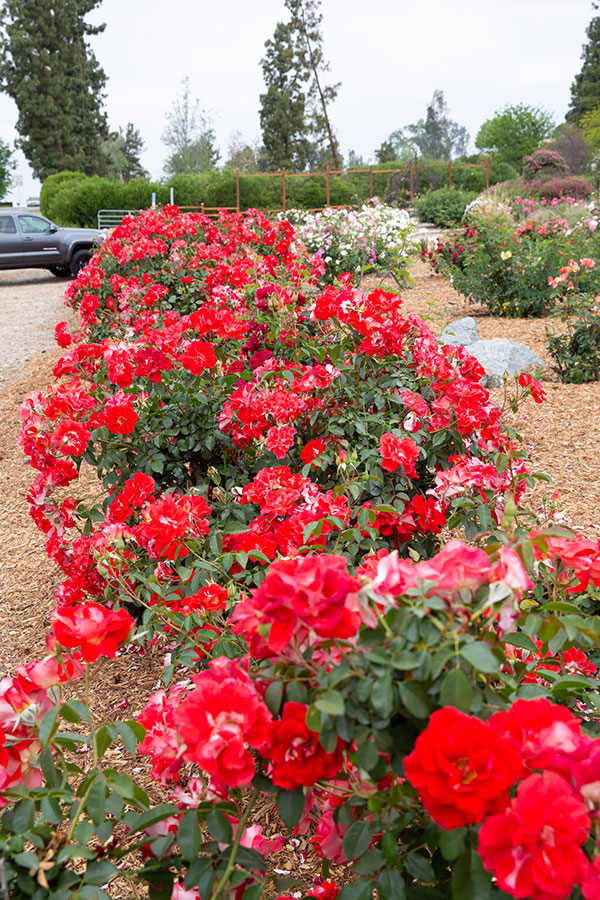pruning
There are three main purposes to be accomplished when pruning roses.
- Keep the plant healthy.
- Encourage the plant to grow in a desired shape.
- Encourage blooming, either more blooms or larger blooms.
The proper tool for most pruning is a sharp clean set of bypass pruners. Anvil pruners should not be used for roses as they crush the stem being cut. A saw or lopping shears may be used to cut very large canes (1/2 inch diameter or greater) All pruning cuts on canes greater than 1/4 inch diameter should be sealed with nail polish or glue to prevent cane borers from entering.
Proper pruning will help keep a rose bush healthy. Dead and diseased wood should be removed as soon as possible to prevent further damage to the bush.
The future shape of the bush can be influenced by the location of each pruning cut. Opening up the bush to increase air circulation will help prevent diseases.
Since rose bushes like to send out a strong lateral cane at the node just below a pruning cut, try to make pruning cuts about 1/4 inch above an “outward” facing leaf bud. By doing this and removing plant material from the center of the bush you will create a more open vase‑shaped plant less susceptible to disease. Whenever two canes cross each other, one can be removed.
Roses can be encouraged to bloom better if thin, weak and non‑productive wood is removed to allow the plant to concentrate its blooming on the larger healthier canes. Generally with Hybrid Teas any cane thinner than a pencil should be removed. Plants may be pruned hard to encourage larger blooms but fewer blooms (commonly done with Hybrid Teas.) Or the plant may be pruned lightly and allowed to grow larger and produce more flowers that are smaller (commonly done with some shrub roses.) Prune first year plants only lightly to allow them to concentrate on establishing a strong root system.
